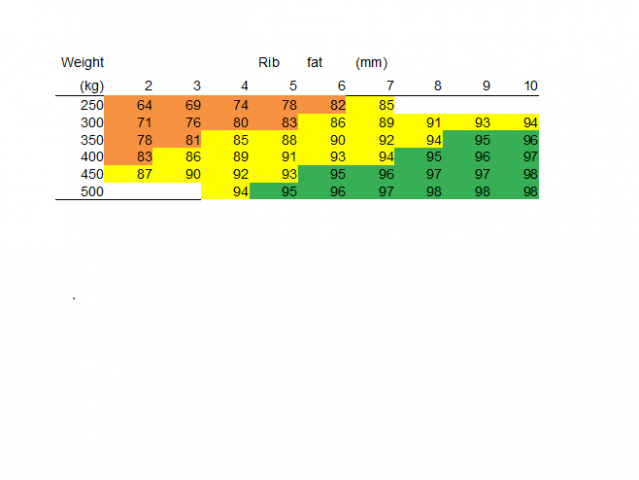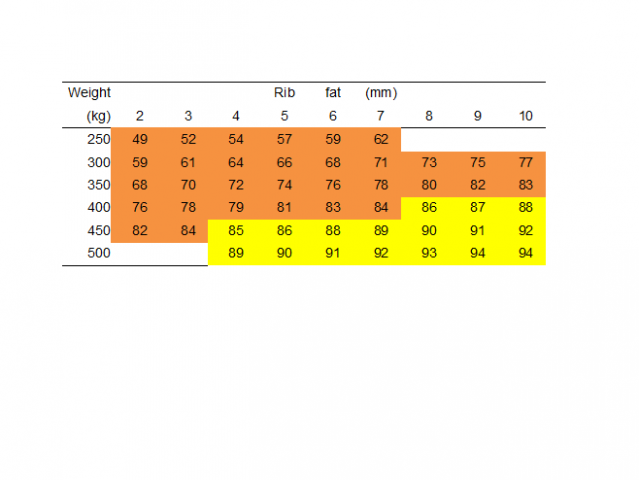Maternal productivity project
The project examined 579 Angus heifers selected for either divergent rib fat EBV or divergent Net Feed Intake (NFI) EBV. They were moved soon after weaning to either DAFWA’s Vasse Research Centre or the Southern Australia Research and Development Institute’s Struan Research Station.
Heifers were 11–18 months of age when they were joined for nine weeks.
Heifers were weighed and fat scanned regularly. Calving dates were used to calculate when heifers conceived and to extrapolate pregnancy rates expected for a six week joining period.
While there was no significant difference in pregnancy rates between the high and low NFI heifers (results not presented), the high fat EBV heifers had higher pregnancy rates than the low fat EBV heifers (Table 1). High fat heifers had eight and twelve percent higher pregnancy rates than the low fat heifers under nine and six week joining periods respectively.
| Genotype | Weight (kg) | Rib fat (mm) | Pregnancy rate under 9 weeks joining (%) | Pregnancy rate under 6 weeks joining (%) |
|---|---|---|---|---|
| High Rib Fat EBV | 360 | 4.4 | 91 | 77 |
| Low Rib Fat EBV | 364 | 3.5 | 83 | 65 |
| Difference between genotypes | 4 | 0.9 | 8 | 12 |
Statistical analysis looked into the effect of age, weight and fat on whether or not heifers conceived.
The results showed that weight was the main factor affecting pregnancy rate in heifers, followed by fat and then age being the least influential factor. In fact, once weight and fat were in the model, age was not significant.
Based on the results of the project the following tables were prepared showing the relationship between weight, fat and pregnancy rates on 400 day-old Angus heifers after either nine (Table 2) or six weeks (Table 3) joining.


